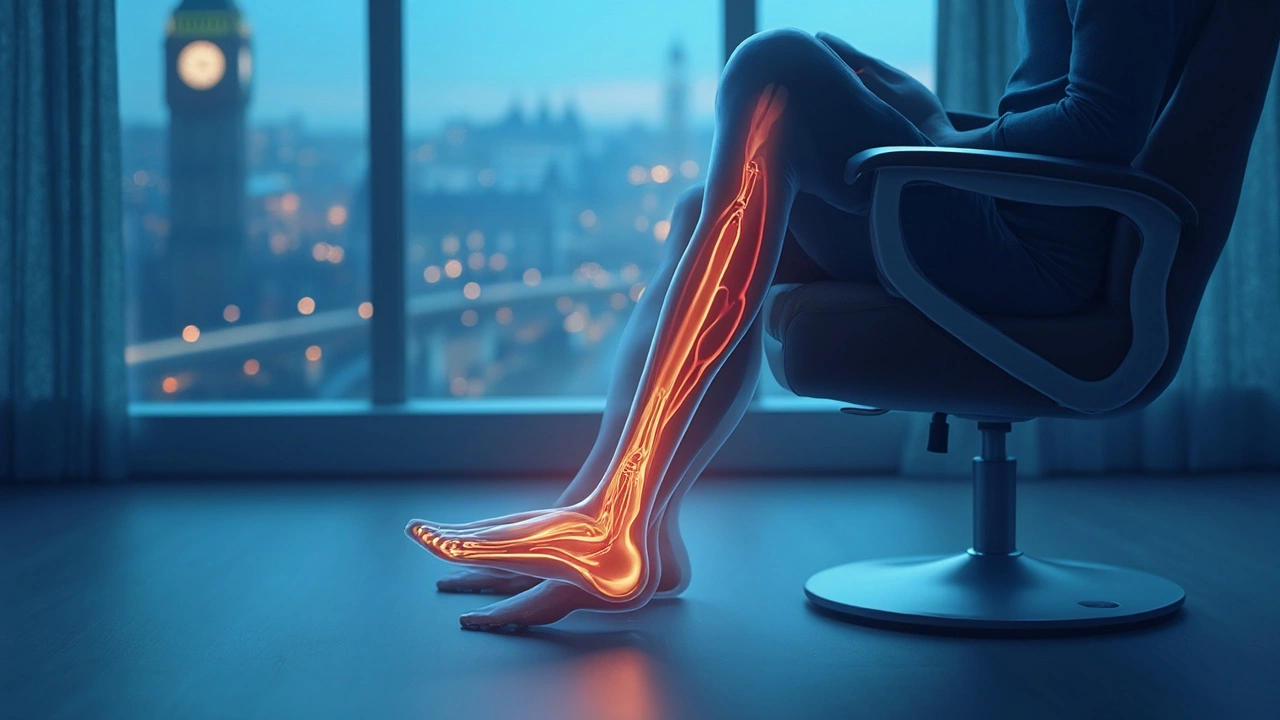
Ever settle into your favorite recliner hoping for comfort, only to find your legs tingling, aching, or just plain sore a while later? Annoying, right? You’d think the holy grail of living room seating would give your legs a break, not a fresh problem. Yet if this keeps happening, you’re far from the only one. Most people blame it on "just getting older," or say the chair’s too soft or firm, or maybe their shoes are at fault, but there’s a real science to why your legs ache in that plush throne of relaxation. Let’s peel back the cushions and see what’s going on — and what you can do about it.
Unlike stiff-backed chairs or squishy couches, recliners look like ergonomic marvels. But, while they feel cushy at first, they can sometimes betray you in unexpected ways. Let’s talk about blood flow. When your legs dangle off the edge of a recliner or your knees are bent for long periods, you’re basically squeezing some of the plumbing that keeps everything below the belt happy. Gravity isn’t always your friend, especially when circulation slows.
When you sit in a chair with your knees above your hips or your feet dangling off the edge, your veins—especially the big ones behind your knees and in your calves—have to work harder to shuttle blood back up. Your muscles act as pumps during regular movement, but in a recliner, you’re at rest. Blood can pool, leading to swelling, tingling, or that familiar ache. The technical term? "Dependent edema." It literally means fluid builds up in your lower legs when they’re below heart level, and it’s pretty common in reclined or seated positions, especially as people get older or if they have existing circulation problems.
It doesn’t stop at blood flow. Nerves can take a beating, too. The way you position your legs — maybe one tucked under, or both pressed into the footrest — can compress nerves like the peroneal nerve near your knee. This can cause numbness, burning, or even a "pins and needles" feeling, sometimes called paresthesia. Even your lower back can play a surprise role: if the recliner doesn’t support your lumbar spine, it might put pressure on your sciatic nerve, sending aches or zings down your legs.
Here’s a weird bit: a survey from the American Academy of Orthopaedic Surgeons found that up to 63% of people sitting in recliners for over an hour complained of occasional leg discomfort. That’s not just a grandmother anecdote from bingo night—it’s enough to make any Netflix binge feel a little less inviting.
Let’s get personal with what’s actually causing those aches. First, take a quick look at how you sit: Do you cross your legs? Let them dangle off the end? Prop them up too high? Each of these habits creates different pressure points. Crossing your legs crushes blood vessels and nerves; letting your heels rest on the very edge can jam up your Achilles and cut off blood to your feet.
Now consider the recliner itself. Not all are made the same. Some are too short for tall folks, so feet dangle, pulling on calves. Others are too high, leaving thighs compressed against the seat, stressing nerves and slowing circulation. In fact, furniture makers have yet to craft a truly one-size-fits-all recliner. That $1,000 leather beast at your brother-in-law’s house might be murder for your knees but heaven for his. Body types matter. Your unique anatomy means what’s comfortable for someone else could be bad news for your legs.
Add in health issues and things really get interesting. People with diabetes, varicose veins, arthritis, or restless leg syndrome may notice symptoms flare up after a short sit. Your age and weight factor in, too. Extra pounds put more pressure on veins and nerves, and age brings a higher risk for circulation hiccups. Don’t forget hydration. When you don’t drink enough water, blood becomes thicker and flows more slowly, ramping up the odds for cramps or aches—especially if you’re sitting still for long stretches.
Then there’s something called the "recliner trap." Because you feel SO cozy, you don’t move as much, making the problem worse. Compare this to how fidgety you get in a hard kitchen chair. The soft support can give a false sense of security, and before you know it, a "quick rest" turns into three hours, and your legs pay the price.
| Cause | What Happens | Common Symptoms |
|---|---|---|
| Poor Circulation | Blood pools in the lower legs | Swelling, aching, cramps |
| Nerve Compression | Pressure on nerves near knee or thigh | Numbness, tingling, burning |
| Improper Chair Fit | Legs hang off or jam into seat | Pain, restless feelings, stiffness |
| Lack of Movement | No muscle pumping activity | Stiffness, aches, heaviness |
| Poor Hydration | Thicker blood, cramping | Sharp cramps, fatigue |

You don’t have to choose between comfort and pain. Adjusting how you use your recliner can make a world of difference. Let’s talk real fixes — nothing fancy, just practical.
One trick from physical therapists: do mini toe curls or pump your calves against the footrest now and then. It’s like a tiny workout for your veins. If cramps are the main enemy, regular stretching and getting more magnesium (think leafy greens, nuts, seeds) can make a difference.
You can even track which positions or time limits cause you the most discomfort—keep a note on your phone. Over weeks, patterns will show up, and you’ll know exactly what to tweak.
Most of the time, fixing your sitting position or buying a better recliner sorts out the aches. But sometimes, pain is a signal something bigger is going on. If you notice swelling and redness in one leg, warmth to the touch, chest pain, or shortness of breath, these could be signs of a blood clot—drop everything and call your doctor right away.
If numbness or weakness won’t go away after getting up and moving for a few minutes, your nerves could be getting pinched or damaged, either from your chair or because of a problem higher up, like your back. Diabetes complicates things too, because high blood sugar can weaken veins and nerves over time—if you have diabetes, don’t take new leg aches lightly.
Other red flags: sudden sharp pains, leg pain after injury, or any situation where over-the-counter pain medications or simple changes aren’t helping after a week or two. Trust your gut. If something feels wrong, it probably is. Doctors have heard it all before, and catching problems early never hurts.
You might also want to ask for a blood test, especially if you have family members with circulation problems or blood clot history. Early detection beats late-night Google searches any day of the week. And if those recliner aches are new or getting worse, don’t just write it off—it’s worth a checkup.

If you’re ready to reclaim recliner time without the leg pain, here’s some good news. There are smarter ways to lounge. Start by treating your body like a science experiment—adjust, observe, and tweak until comfort strikes.
No chair is worth your pain. Test a few tips, swap positions, and make your comfort zone work for your body—your next chill session doesn’t have to hurt. And if someone cracks a joke about your “fussy” seating routine, just remind them: happy legs mean happy everything else.
Write a comment